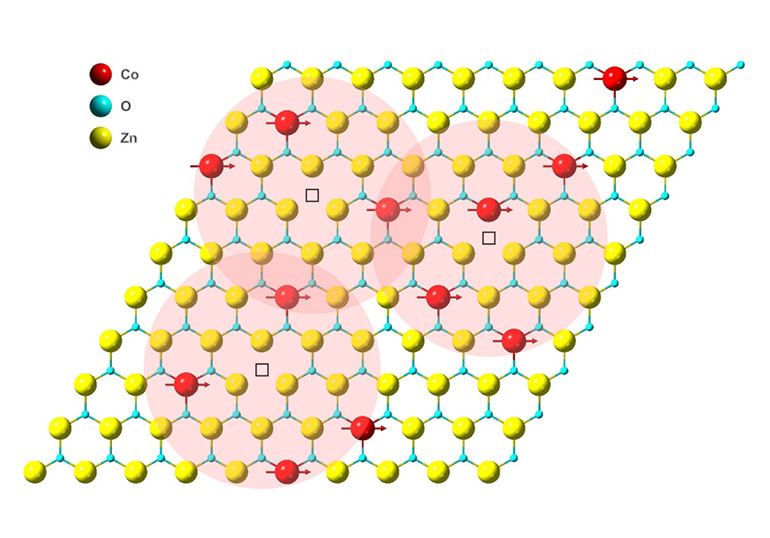
Baking in a conventional lab oven transformed the mixture into a single atomic layer of zinc-oxide with a smattering of cobalt atoms sandwiched between layers of graphene. In a final step, the graphene is burned away, leaving behind just a single atomic layer of cobalt-doped zinc-oxide.
“We’re the first to make a room-temperature 2D magnet that is chemically stable under ambient conditions,” said Jie Yao, a faculty scientist in Berkeley Lab’s Materials Sciences Division and associate professor of materials science and engineering at UC Berkeley.
“This discovery is exciting because it not only makes 2D magnetism possible at room temperature, but it also uncovers a new mechanism to realize 2D magnetic materials,” said Rui Chen, a UC Berkeley graduate student in the Yao Research Group.
The new material can be bent into almost any shape without breaking, and is a million times thinner than a sheet of paper could help advance the application of spin electronics or spintronics that uses the orientation of an electron’s spin rather than its charge to encode data. “Our 2D magnet may enable the formation of ultra-compact spintronic devices to engineer the spins of the electrons,” said Chen.
There are many magnetic thin films but these are still 3D materials that are hundreds or thousands of atoms thick.
“State-of-the-art 2D magnets need very low temperatures to function. But for practical reasons, a data centre needs to run at room temperature,” said Yao. “Our 2D magnet is not only the first that operates at room temperature or higher, but it is also the first magnet to reach the true 2D limit: It’s as thin as a single atom.”
The graphene-zinc-oxide system becomes weakly magnetic with a 6 percent concentration of cobalt atoms. Increasing the concentration of cobalt atoms to about 12 percent results in a very strong magnet.
Exceeding a concentration of 15 percent cobalt atoms shifts the 2D magnet into an exotic quantum state where different magnetic states within the 2D system are in competition with each other.
And unlike previous 2D magnets, which lose their magnetism at room temperature or above, the researchers found that the new 2D magnet not only works at room temperature but also at 100 degrees Celsius (212 degrees Fahrenheit).
“Our 2D magnetic system shows a distinct mechanism compared to previous 2D magnets,” said Chen. “And we think this unique mechanism is due to the free electrons in zinc oxide.”
“With our material, there are no major obstacles for industry to adopt our solution-based method,” said Yao. “It’s potentially scalable for mass production at lower costs.”
To confirm that the resulting 2D film is just one atom thick, Yao and his team conducted scanning electron microscopy experiments at Berkeley Lab’s Molecular Foundry to identify the material’s morphology, and transmission electron microscopy (TEM) imaging to probe the material atom by atom.
Additional X-ray experiments at SLAC National Accelerator Laboratory’s Stanford Synchrotron Radiation Lightsource verified the electronic and crystal structures of the synthesized 2D magnets. And at Argonne National Laboratory’s Center for Nanoscale Materials, the researchers employed TEM to image the 2D material’s crystal structure and chemical composition.
“I believe that the discovery of this new, robust, truly two-dimensional magnet at room temperature is a genuine breakthrough,” said co-author Robert Birgeneau, a faculty senior scientist in Berkeley Lab’s Materials Sciences Division and professor of physics at UC Berkeley who co-led the study.
“Our results are even better than what we expected, which is really exciting. Most of the time in science, experiments can be very challenging,” Yao said. “But when you finally realize something new, it’s always very fulfilling.”